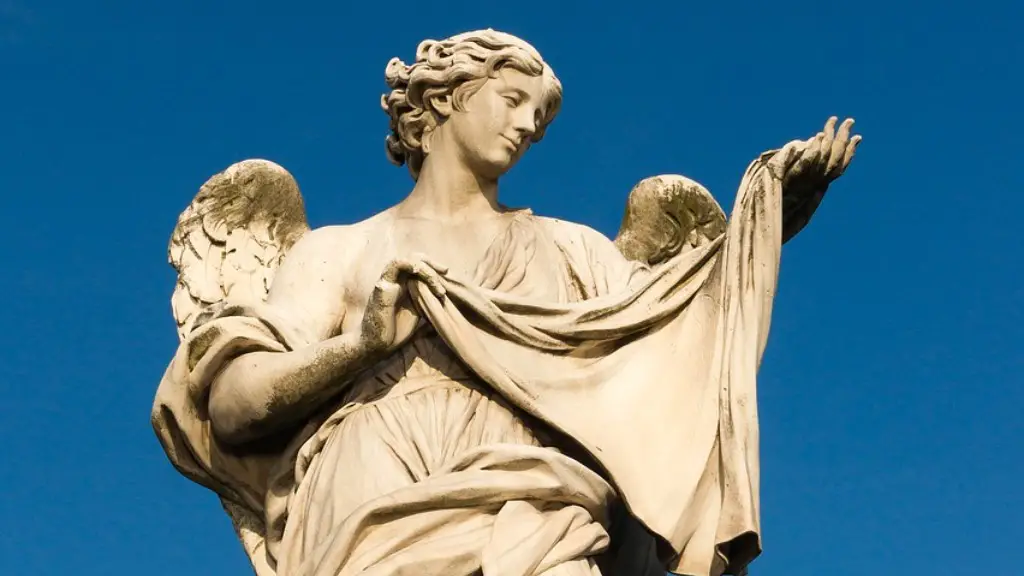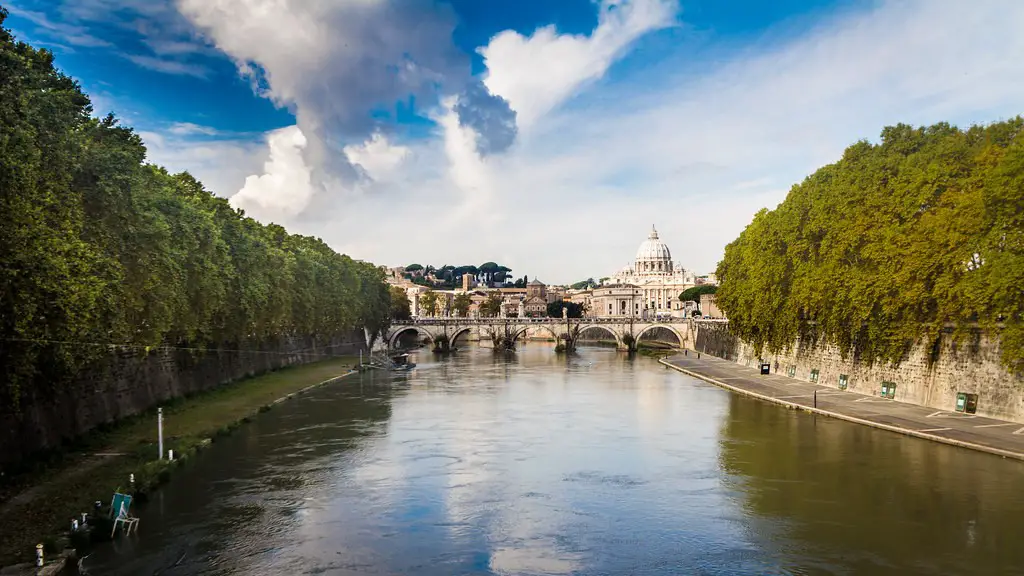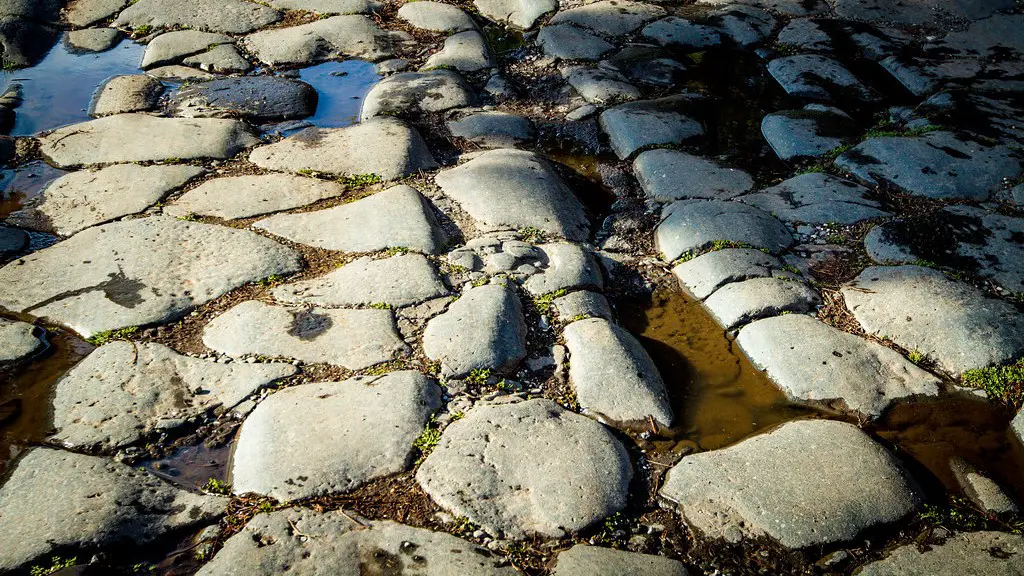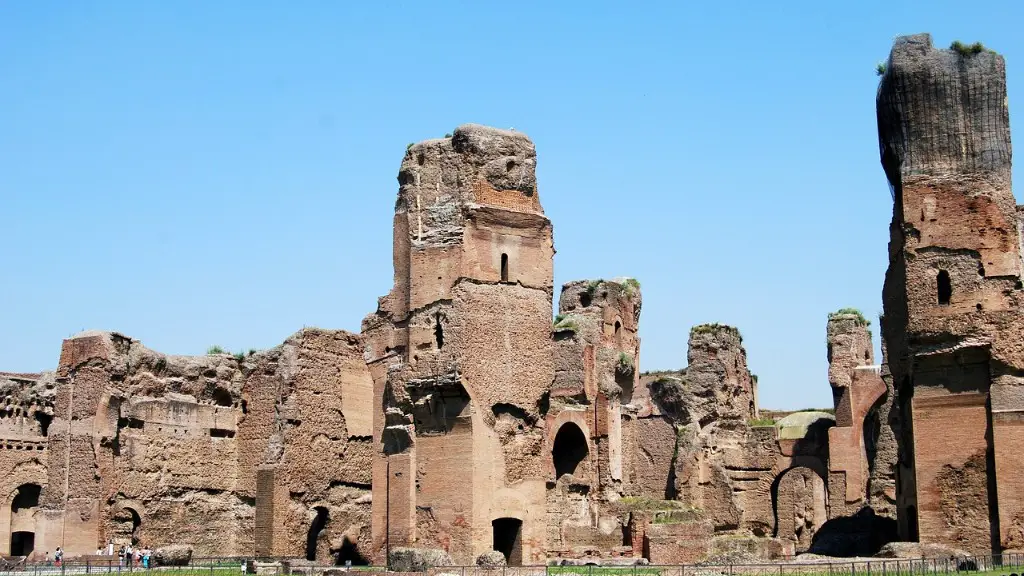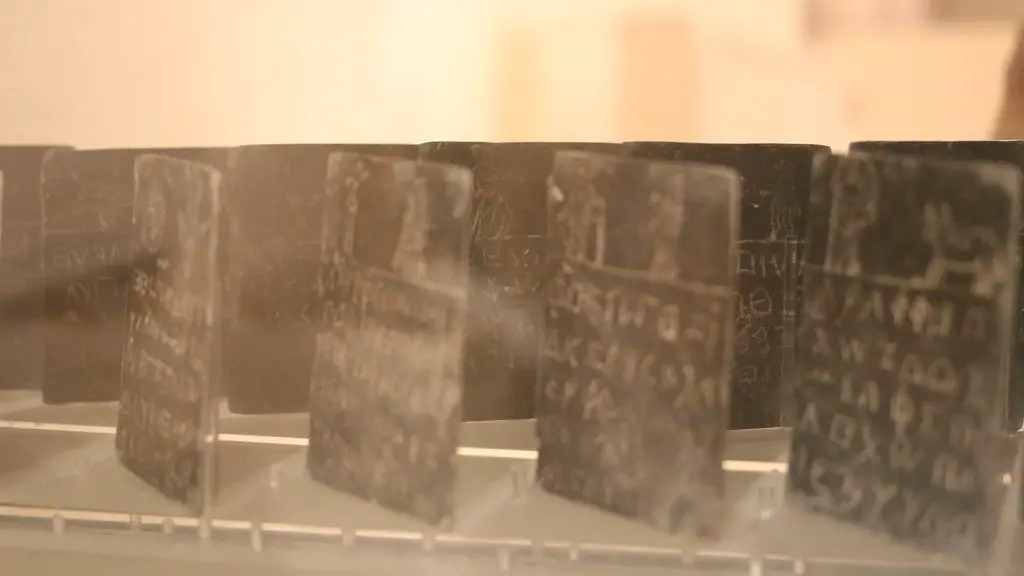Statues in Ancient Rome were powerful symbols and witnesses to the culture, accomplishments, and values of the people who made them. They had a broad range of functions, from serving as decorative elements to acting as status symbols to performing religious, legal, and commercial purposes. Statues could also be used as a form of political statement, giving the people of Rome a tangible reminder of the authorities they lived under.
The statues of Ancient Rome were typically made of a range of materials, including marble, bronze, and stone. Often, they were fashioned as busts or full- figure statuary, and were decorated with intricate carvings and engravings. Some of the most iconic and instantly recognisable sculptures of the era are those of the emperors of Rome. Statues of these great rulers were an important symbol of the Empire – they acted as a visual reminder of the emperor’s greatness and power, and conveyed a sense of imperial divine providence.
Statues of gods, goddesses and other deities were also prevalent in Rome. Many households would have various representations of their most revered gods, including carved figures with ivory faces and gold foliage, and miniature sculptures made of precious stones and metals. These figurines were typically placed in shrines and were said to bring divine protection and luck to their owners. They would also be used to make offerings to the gods, such as waters, incense and other offerings.
Public statues were also a common sight in the Roman city centres. These works could serve a variety of purposes – from serving as decorations to honouring famous citizens. Public statues could be dedicated to historical figures, such as rulers and generals, or to mythical and legendary figures. Statues were often inscribed with the names, titles and achievements of the figures being honoured.
Most monuments and sculptures of Ancient Rome were designed to be imperishable. This was intended to emphasise the greatness of Rome and the importance of its government and its laws. Consequently, many of these sculptures have survived the ravages of time and can still be seen in various cities across Europe today, providing valuable insights into the culture, values, and history of ancient Rome.
Musicians and Actors
Statues were also used to honour musicians, actors, and other entertainers. These works were often highly crafted and depicted the figure engaging in the relevant art form. Musicians would be sculpted in the act of playing their instruments, while actors would be made in dramatic poses. These statues were typically placed in public areas, such as town squares, where a crowd of people could gather to appreciate the work of the figure being honoured.
The artistic style of many statues of these figures can provide clues about their social role and their place in the wider Roman society. For instance, the use of recognisable natural poses and realistic expressions was a popular approach for memorializing dramatists and rhetoritions. Such statues conveyed the particular skill and talent of the person being honoured, as well as their general reputation.
By contrast, statues of musicians often depicted a more idealised form of the art form. They would typically be fashioned with exaggerated gestures and motions, such as flamboyant arm movements and exaggerated facial expressions. These depictions were intended to communicate the enthralling spirit of the musical art form, as well as the reputation of the musician being celebrated.
Gladiators
The statues of gladiators were also used in Ancient Rome. These works of art typically depicted the gladiators in combat poses wearing their signature armour. These statues not only paid homage to the physical prowess and feats of the Gladiators, but could also be used to advertise upcoming fights and to commemorate special victories. Gladiatorial statues often conveyed a powerful message, as they featured daring and heroic activities that defied those of conventional day-to-day life.
Gladiatorial statues were often placed in the Coliseum, where crowds could gather around them and make their own interpretations of the scenes portrayed. Gladiators were primarily viewed as brave combatants and heroic figures, but there was also an element of violence and danger associated with them. This exciting and almost intoxicating danger was seen as an attribute that gladiators embodied, and statues depicting combat scenes were used to reflect and reinforce this sentiment.
These statues served as a reminder of the power of the Roman Empire and of its ability to command respect and admiration. Not only did they glorify the great deeds of gladiators, but they also provided a vivid and visceral reminder of the Roman Empire’s might and power. This is why many History experts believe that these statues of gladiators were perhaps the most effective form of propaganda Rome ever employed.
Public Baths
Statues were also prominently displayed in public baths. This was because they served as a form of entertainment, as well as being aesthetically pleasing. Statues of gods, goddesses, and famous heroes were sometimes incorporated into the designs of public baths, in order to convey a particular set of values and ideals.
For instance, the statue of Venus in Cicero’s Bathhouse served as an allusion to and celebration of female beauty. This served to inspire those who entered the bathhouse, and reminded them of the elevated status of beauty and physical perfection to which all Roman citizens should aspire. Similarly, statues of Hercules, Mercury and other mythological figures served as a reminder of Rome’s rich mythological heritage and its importance to daily life.
Overall, the purpose of statues in Ancient Rome was multifaceted. They could be used to honour rulers and mythological figures, to commemorate public figures, and to decorate public areas. Statues were also beloved objects of devotion and luck, and were central to many aspects of everyday Roman life. It is perhaps for this reason that so many of these priceless works have survived until this day.
Symbol of Wealth and Power
Statues in Ancient Rome could also be used as a symbol of wealth and power. Many of these sculptures were commissioned by the wealthy, who sought to immortalise themselves with sculptures in public places. These works were intended to exalt the patron and send a message of their place in society.
Statues depicting the patron were often placed in prominent public areas, such as town squares and near public monuments where they could garner maximum attention. This was a statement of the patron’s power and a reminder of their higher station in the Roman hierarchy. These sculptures could also be used to publicise their political agendas, such as public works projects or religious reforms.
The size of the sculptural monuments and their locations also communicated the patron’s wealth and influence. Many of the most impressive sculptures of Rome featured in some of the most prominent spots in the city, and demonstrated the patron’s ability to command attention with their works. Statues could also be made of plentiful materials, including bronze, stone, marble, and other costly materials, further demonstrating the patron’s affluence.
Statues were also often used to display the patron’s loyalty to Rome. They were designed to embody the virtues and values of the Roman Empire and its citizens. By depicting these values in stone and immortalising them, the statues provided an important reminder to citizens of their duty to uphold the principles of Rome.
Civic Pride
Statues were used to promote civic pride and loyalty amongst the population of Ancient Rome. Statues of renowned public figures were erected to honour their courage and valour. The works were also used to celebrate Rome’s victories, and provided visual reminders of the great deeds these figures had achieved.
In some instances, the statues were used to symbolise the city’s military power. This was particularly prevalent in cases where Rome had conquered a major enemy, such as the Gauls, and was commissioned to commemorate the victory. The figures depicted in this kind of scenario typically featured military leaders and warriors, as well as scenes from the major battles.
Statues were also used to promote Roman values, such as honesty, lawfulness, and justice. Statues of gods and goddesses were often used to symbolise these values, and remind people of their importance. In turn, these works of art served to inspire citizens to uphold the Roman system and remain loyal to their civic duties.
Finally, statues in Ancient Rome were used to commemorate significant events in the city’s history. These works of art typically depicted the main characters and themes associated with the event, and served to remind the populace of these moments in time. Statues were also used to commemorate important people, such as rulers and other public figures, as well as to venerate events and Roman holidays.
Conclusion
Statues in Ancient Rome served to decorate homes and public spaces, to venerate gods and heroes, to celebrate public figures, and to symbolise the power of the Roman state. Statues were also used to promote civic loyalty and public virtues, as well as to commemorate important events and figures in Rome’s history. Moreover, the statues of Ancient Rome continue to be a reminder today of Rome’s grand and enduring legacy.
